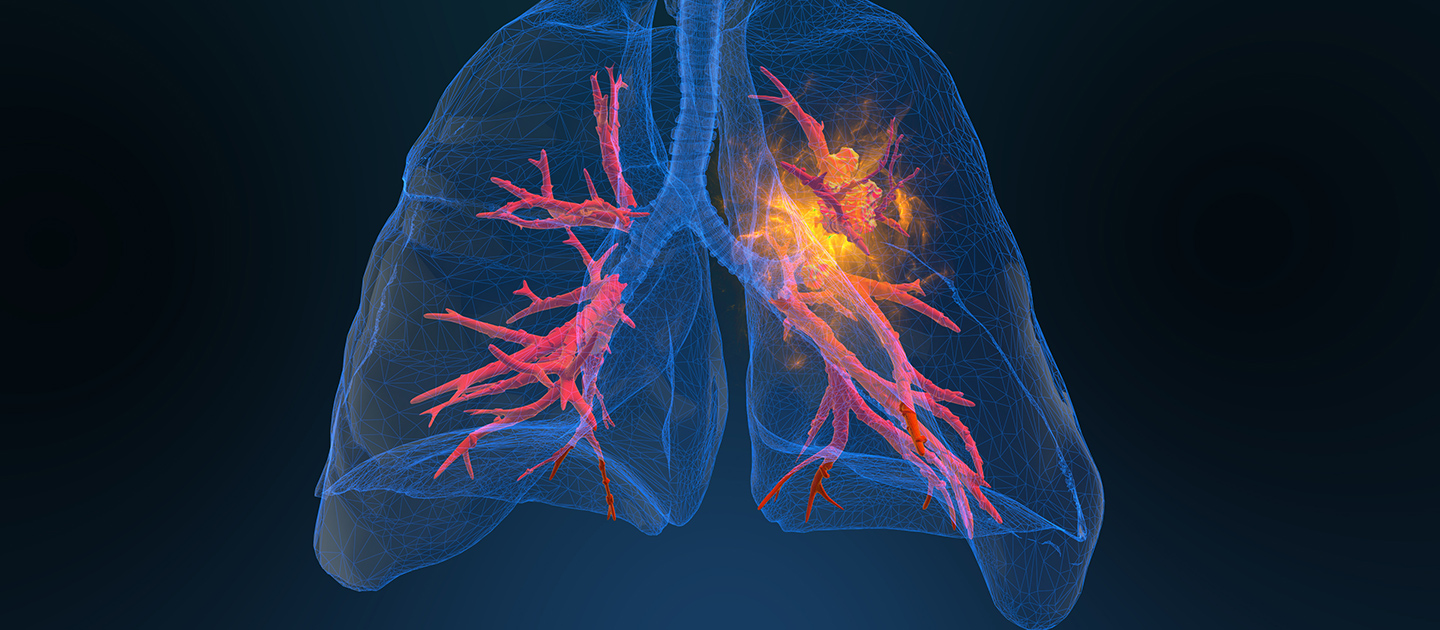How a Cheek Swab Could Help Fight Lung Cancer
The novel test detects chromatin alterations

Early detection is pivotal to treating lung cancer. According to the American Lung Association (ALA), the five-year survival rate for lung cancer is 56 percent for cases when the disease is still localized. Unfortunately, per the ALA, only 16 percent of cases are diagnosed at that stage, and when the disease has spread to other organs, the survival rate plummets to five percent.

These difficult statistics make early detection of lung cancer – the leading cause of cancer deaths in the United States – an urgent matter. Recent research from Professor Vadim Backman and the Center for Physical Genomics and Engineering (CPGE) could one day help doctors make that crucial discovery earlier and save more lives.
Developed at CPGE and designed for use at home or in a primary care office, the novel test is based on a new paradigm for cancer detection that uses artificial intelligence-enhanced optical nanosensing of alterations in the chromatin (genome) structure of cells – changes that are associated with the earliest stages of carcinogenesis and cancer progression. The study uses a concept called field carcinogenesis as the source of this new biomarker. If chromatin alterations which are associated with early lung cancer are detectable not just in a lesion or tumor, but in the nucleus of cells throughout the organ “field” – in this case, from the lungs to the cheeks – then chromatin alterations could be discovered using a simple, non-invasive method.
“A swab of cheek cells can be analyzed to detect signs of these nanoscale changes at a stage when lung cancer is much more curable,” Backman said. “Such a simple, easy-to-administer, and accurate test could increase patient uptake, improve early detection and reduce mortality, as well as reduce false positives and unnecessary procedures.”
A swab of cheek cells can be analyzed to detect signs of these nanoscale changes at a stage when lung cancer is much more curable. Such a simple, easy-to-administer, and accurate test could increase patient uptake, improve early detection and reduce mortality, as well as reduce false positives and unnecessary procedures.
Vadim BackmanSachs Family Professor of Biomedical Engineering and Medicine, Associate Director for Engineering and Technology at the Robert H. Lurie Comprehensive Cancer Center of Northwestern University
Though further studies and large-scale clinical trials are needed to optimize and advance the technology toward translation into clinical care, Backman is optimistic about this method’s potential impact on lung cancer care and other cancers.
“The field carcinogenesis/chromatin alteration detection paradigm has the potential to be applied to other major cancers including colon, ovarian, esophagus, prostate, breast, and others, offering hope for reductions in mortality similar to what was seen after the introduction of the Pap smear for cervical cancer (around 90 percent, in that case),” Backman said.
Backman is the Sachs Family Professor of Biomedical Engineering and Medicine at the McCormick School of Engineering and associate director for engineering and technology at the Robert H. Lurie Comprehensive Cancer Center of Northwestern University. He directs the CPGE, which focuses on studying and manipulating chromatin structure, which regulates gene expression, to treat disease and engineer living systems to overcome environmental challenges. This work builds on previous research by the CPGE, such as the modeling of chromatin structure, identification of early genomic alterations in carcinogenesis, and the application of artificial intelligence to improve the diagnostic performance of the technology.
The current industry standard for lung cancer screening is low-dose computed tomography (LDCT). However, cost, access, stigma, and lack of adherence to LDCT guidelines are among the major challenges limiting its impact, as only about five percent of the LDCT-eligible population undergoes screening, resulting in most lung cancer cases being detected at an advanced stage. Other testing methods such as chest X-rays and sputum cytology have proven unsatisfactory when evaluated in large-scale clinical screening settings.
In the big picture, this is a radically new approach to cancer screening and early detection with implications for a range of other major cancers.
New methods based on standard protein biomarkers used for the detection of cancer do not provide sufficient sensitivity and specificity. Recently, there has been significant interest in the development of protocols that rely on tumor secretions in the blood, such as liquid biopsy. These tests identify cancer by analyzing circulating tumor DNA. Although initial results have shown promise in the detection of various cancers, including lung cancer, the sensitivity to Stage-I and smaller lesions drops precipitously below a clinically acceptable level. It has been suggested that this is not primarily a technological limitation, but may instead be related to the biology of the source and type of biomarker.
“The ability to detect nanoscale chromatin alterations associated with carcinogenesis as a biomarker, on the other hand, means that we can potentially identify the initiation of cancer when its earliest genomic events occur, before lesions or tumors form,” Backman said. “This is the most clinically useful stage for screening because of the major improvement in prognosis and mortality that come with earlier diagnosis. In addition, a simple self-administered test may have benefits in terms of reducing stigma, cost, and access issues associated with the extremely poor uptake that currently exists among the LDCT screening-eligible population.
“In the big picture, this is a radically new approach to cancer screening and early detection with implications for a range of other major cancers.”
A paper supporting this work, titled “Early Detection of Lung Cancer Using Artificial Intelligence-Enhanced Optical Nanosensing of Chromatin Alterations in Field Carcinogenesis,” was published in August in Scientific Reports, a Nature journal. The research was carried out with funding from the National Institutes of Health (grant #U54CA268084 and T32GM142604) and the National Science Foundation (grant #EFMA-1830961).